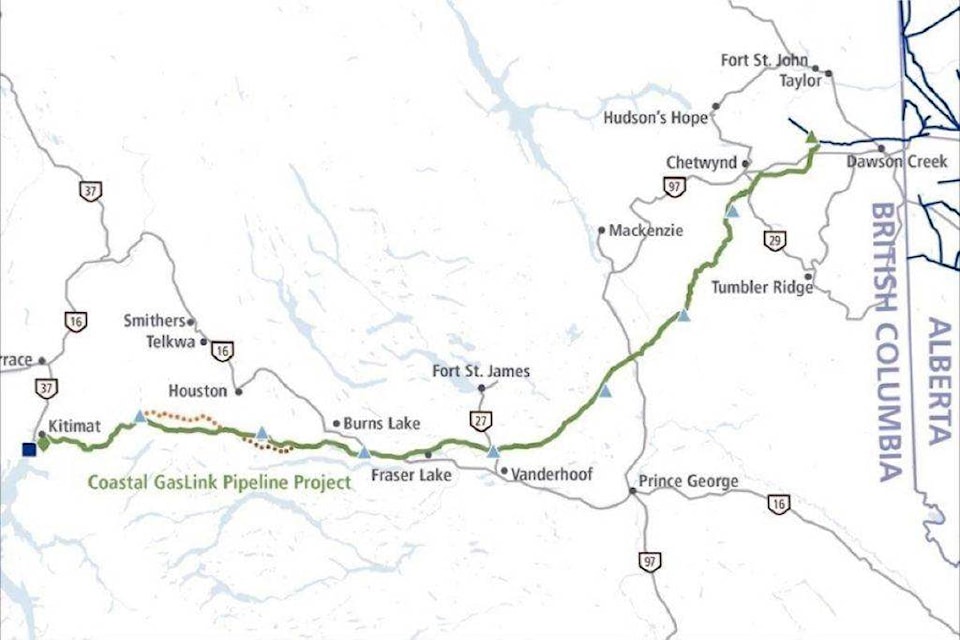TransCanada has recently announced that its Coastal GasLink Pipeline Project is conditionally awarding $620 million in contract work to northern B.C. First Nations.
This would benefit Aboriginal businesses for the project’s right-of-way clearing, medical, security and camp management needs.
The project anticipates another $400 million in additional contract and employment opportunities for Aboriginal and local B.C. communities during pipeline construction.
Burns Lake Band (Ts’ill Kaz Koh) Chief Dan George said it’s important to balance environmental protection with economic opportunity.
“Coastal GasLink and Ts’ill Kaz Koh have both worked hard to establish a trusted reciprocal business relationship and I am confident that this will benefit our members today and in the future,” he said. “It is great to have finally reached this point.”
All contracts remain conditional upon a final investment decision - which is expected to be made later this year - by the Joint Venture Participants of LNG Canada for their proposed natural gas liquefaction facility in Kitimat.
“This is terrific news,” said Karen Ogen-Toews, CEO of the First Nations LNG Alliance. “When there is a final investment decision, it will mean employment for First Nations; it will mean a chance to work towards careers, and not just short-term jobs, which is really important to us.”
“It means revenue, and that means opportunity to work on closing the social-economic gap that keeps indigenous people so far behind,” she added.
Wet’suwet’en First Nation Chief Vivian Tom said the announcement is an important step forward.
“It shows the world how well First Nations and industry can work together to achieve significant economic benefits, protect the environment and preserve cultural values,” she said. “We look forward to the ongoing work with Coastal GasLink to maintain our mutually beneficial relationship.”
According to TransCanada, more than one-third of all field work completed on the project has been conducted by Aboriginal people to date.
Thus far, the Coastal GasLink team has signed project agreements with 95 per cent of Aboriginal communities along the route. These agreements will also provide Aboriginal groups a sustainable revenue source over the life of the project.
Nee Tahi Buhn Band Chief Ray Morris said the amount of contract work awarded to First Nations for the Coastal GasLink project is significant.
“For Nee Tahi Buhn, this means jobs and community benefits that will help our community,” he said. “We have been working with the project since it began back in 2012, supporting field work and project planning throughout the project process.”
“This is an important milestone for everyone involved,” he added.
Skin Tyee Nation Chief Rene Skin said he’s looking forward to working on a project that’s very important for his community.
“We believe that this pipeline will be built safely and responsibly to help move our natural gas out of British Columbia for the benefit of all our communities,” he said. “We look forward to the jobs and benefits this project will provide to our community.”
TransCanada says the Coastal GasLink project will employ a range of job opportunities that require a variety of responsibilities, skill levels and trade specialization from Aboriginal and local resources.
Specialized project work includes right-of-way clearing, gravel processing, access road development, camp and storage site preparation, camp support services, materials hauling, right-of-way grading, welding, installation, site clean-up, reclamation and other activities.
Last October the RDBN sent a letter to the B.C. Oil and Gas Commission raising several concerns over the proposed pipeline project. One of these concerns was the fact that Coastal GasLink had made no specific commitments regarding the use of local employment and the provision of apprenticeship positions for local employees.
In a letter sent to the RDBN board earlier this year responding to some of these concerns, Coastal GasLink said that when it comes to local hiring the company goes “beyond the industry standard.”
READ MORE: Coastal GasLink responds to Regional District of Bulkley-Nechako concerns
The Coastal GasLink pipeline would start in northeastern B.C. and then run approximately 670 km to Kitimat, passing south of Burns Lake for part of that route.
TransCanada is reviewing nine sites near Burns Lake for a work camp for its Coastal GasLink natural gas pipeline that would be built should the LNG Canada gas liquefication plant near Kitimat be constructed. But it won’t be releasing locations until it decides on the most promising ones.
The company had earlier settled on one location near Tchesinkut Lake and had signed a lease for the property but then abandoned that plan after opposition from the neighbours.
- With files from Rod Link
